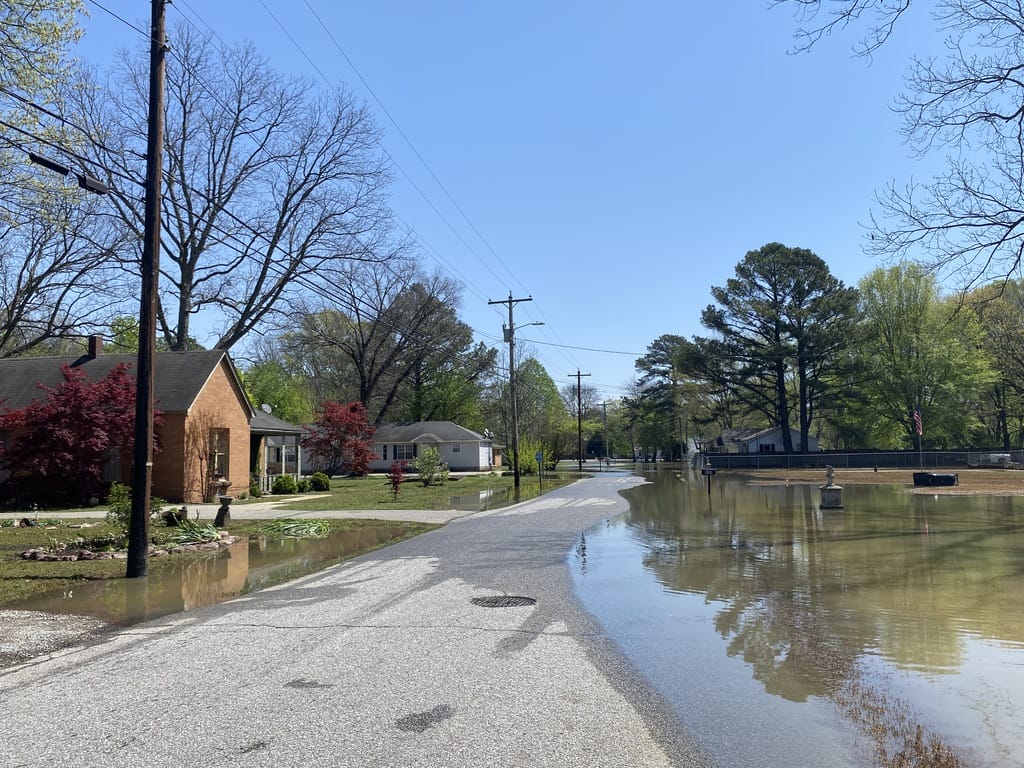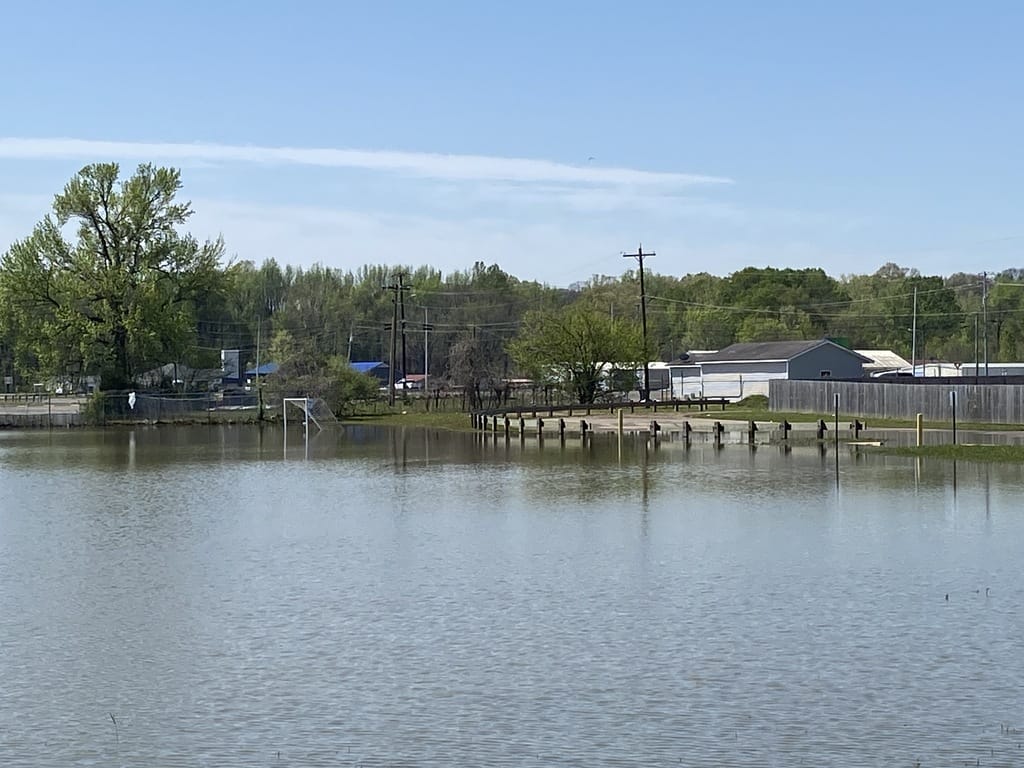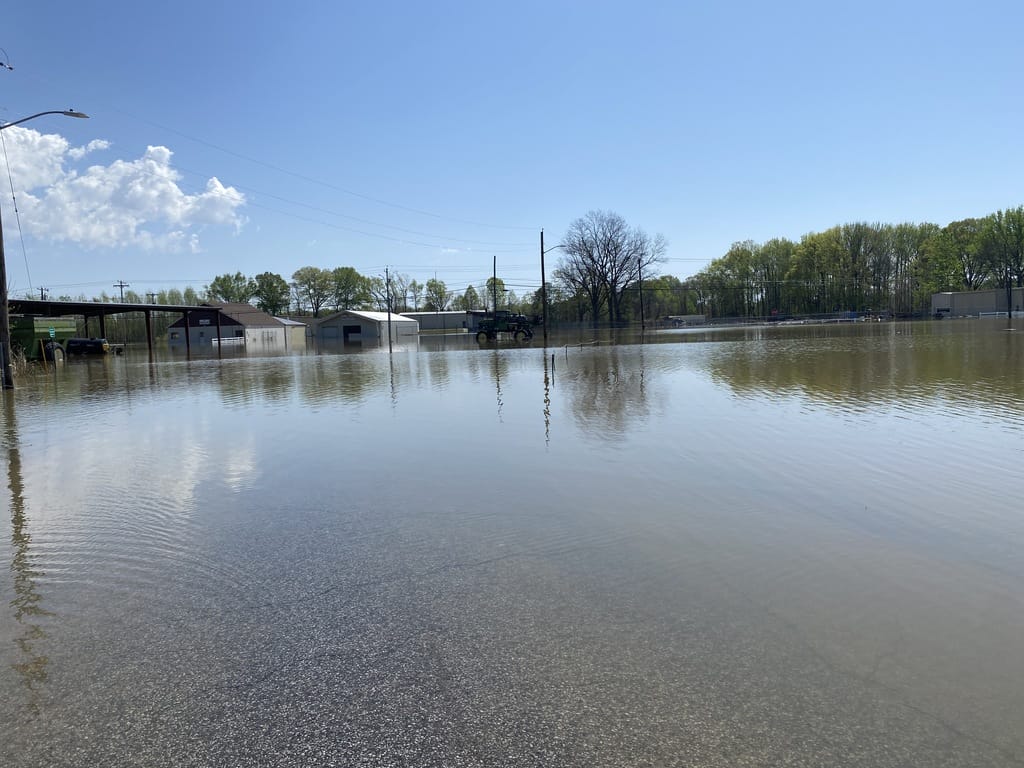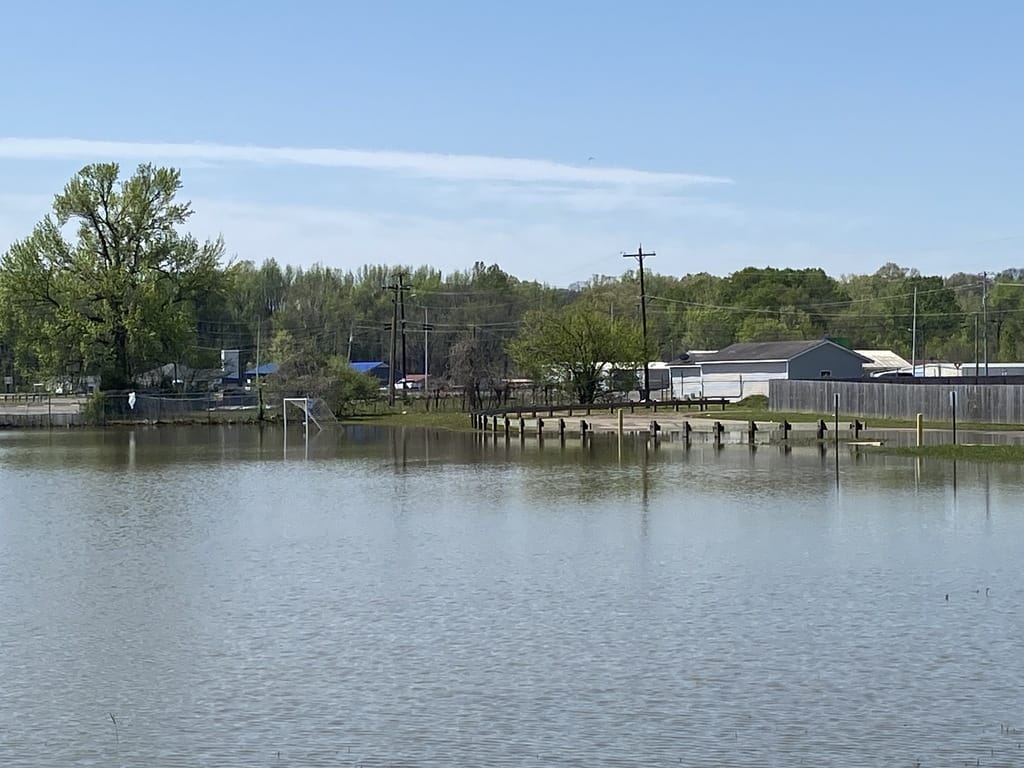Nearly a month after severe storms battered and flooded several West and Middle Tennessee towns, local officials and nonprofits are still helping residents pick up the pieces while awaiting the Trump administration’s decision on federal aid.
Gov. Bill Lee requested a major disaster declaration — which would unlock federal recovery assistance dollars for public entities and individuals — for select counties on April 17. The federal government has 30 days to respond.
Damage estimates for public property and recovery services throughout West and Middle Tennessee exceed $26 million according to assessments conducted by local, state and Federal Emergency Management Agency (FEMA) officials. To qualify for FEMA aid, damages must be beyond the response capabilities of local and state governments.
Tennessee Emergency Management Agency Assistant Director of Recovery and Mitigation Craig Hanrahan said he believes Tennessee will meet the eligibility threshold for federal public aid. But that’s not a guarantee that the Trump administration will approve the disaster declaration — Arkansas, West Virginia, and Washington have seen their requests for FEMA assistance denied as the federal government pushes states to take on more recovery responsibility.
Individual losses are more difficult to calculate, Hanrahan said. Around 300 homes and 14 businesses or nonprofits were severely damaged by the storms and flooding.
Obion County Mayor: FEMA dollars ‘would be vital’
In Obion County, most of the 100-plus families who evacuated their homes have returned, Obion County Mayor Steve Carr said Wednesday. The flood water has receded, leaving an estimated $1 million in damage to local roads. Several hundred acres of farmland were rutted by the force of the water and covered in sand.
This round of storms hit personal property hard, Carr said. In February, flooding devastated the small town of Rives. In April, Rives flooded again, but this time, the damage also extended to several other communities.
Mission teams from churches and other organizations have helped homeowners tear out wet floors, insulation, drywall and debris. Around four families were displaced, but most residential houses should be “in good shape” within a month or less, he said.
“We’re thankful for the help they’ve provided these folks, because they certainly needed it,” Carr said. “Still do.”
Carr is hopeful that FEMA assistance will come through, particularly for homeowners whose properties suffered major damage.
FEMA calculates individual assistance for those who apply after a disaster declaration is granted, taking things like homeowners and flood insurance into consideration, Hanrahan said.
The Individual Assistance Program may help pay for rental assistance, home repairs and personal property replacement, but isn’t intended to cover all individual losses, according to FEMA.
Officials in affected counties are encouraging residents to document damage to their properties.
If federal aid is denied, “it’s just going to be more difficult for the individuals as they try to find ways to recover from this,” Carr said. “It would be vital to get that help, and we’re certainly hoping that the declaration will come through, but we know there’s a chance that it won’t. We will be here to try to work with them if we can, to help any way we can.”
Should Trump’s administration approve Tennessee’s disaster declaration request, the federal government will cover about 75% of certain recovery costs, with a 25% local match. In Tennessee, the state typically pays for half of that match, leaving local governments to make up the other 12.5% of the bill.
In the absence of public assistance, counties will be on their own to figure out how to recoup the cost of repairing damage.
If federal aid is denied, Tennessee will likely pursue the appeal process and lean on partnerships with nonprofits and faith-based organizations for help with recovery, Hanrahan said. TEMA also encourages local governments to form their own long-term recovery groups with charitable partners.
Nearly 500 tons of debris removed from Dyersburg
Dyersburg, a town with about 16,000 residents in Dyer County, saw damage from flooding and severe winds. A suspected tornado damaged 16 houses, one public building and seven businesses, totaling about $2 million, Dyersburg Mayor John Holden said. Flooding affected 121 properties inside the city limits, including 110 houses, 11 public areas, 48 businesses, five churches and a police precinct.
The community has rallied to help those in need, with churches and nonprofits helping provide meals, cleaning supplies and clothing for flood victims and those assisting in recovery. South Dyersburg, where flood water covered local roadways and crept into homes, is mostly composed of rental properties, Holden said.
Local organizations and church groups have helped remove soaked drywall and insulation from about 75% of the owner-occupied homes in the area, and landlords are working on their properties.
“Those that were displaced and owned their homes, we have got them assistance,” Holden said. Some are still in hotels.




The city removed nearly 127 tons of flood debris and 372 tons of debris from wind damage as of April 28. Combined, the debris is equivalent in weight to about 120 heavy-duty pickup trucks.
Holden said he believes the damage in Dyersburg meets the criteria for public assistance through FEMA, which would help reimburse the city for part of what they spent on cleanup, overtime, equipment and rescue efforts.
In the aftermath of the worst flood in Dyersburg’s history in 2010, the city used some of the federal aid it received to install mitigation measures to lessen the impact of future floods.
Lift stations at the wastewater treatment plant that were lost in 2010’s flood survived this time around because the controls could be lifted several feet above the water, Holden said. Residents of a mobile home park that flooded in 2010 were relocated and the area became the Dyersburg Soccer Complex. The fields were entirely under water in early April, but usable by the end of the month.
If federal assistance doesn’t come through this time, the city will rely on volunteers, churches and relief organizations for help.
“We’ll get it done locally, somehow, some way,” Holden said.
GET THE MORNING HEADLINES.
This article was originally published on Tennessee Lookout under a Creative Commons license CC BY-ND 4.0. Learn more about third-party content on ZanyProgressive.com.




